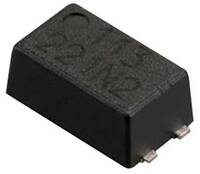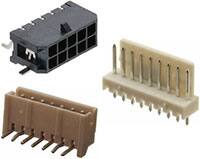Wind River Systems U.K. Ltd
- Regus
Central Boulevard
Blythe Valley Park
Solihull
West Midlands
B90 8AG
United Kingdom - +44 (0)1564 711 110
- http://www.windriver.com
- +44 (0)1564 711 302
Wind River Systems U.K. Ltd Articles
Exploring the biggest challenges for 5G deployment
5G promises exciting advances for Communications Service Providers (CSPs), but the 5G rollout is going to be challenging. CSPs must rapidly build out dense, low latency edge networks in ways that are affordable, secure, and easily maintainable. Guest blog written by Paul Miller.
Surviving the frequency of open source vulnerabilities
In a previous post, I provided a retrospective on Common Vulnerabilities and Exposures (CVEs) and examined Wind River's four-step process to mitigate threats and achieve a strengthened security posture. In this post, I will contrast the learning’s of a 'roll your own' (RYO) Linux platform approach and illuminate some of the advantages for commercially supported Linux. Guest blog written by Glenn Seiler.
COVID-19 triggers enterprises to accelerate transformation
Wind River has issued new research investigating how technology executives - specifically, C-suite leaders and senior executives in areas such as IoT, DevOps, security, and embedded development - from both the US and China are realigning their focus during the COVID-19 pandemic.
AIoT has a nice ring to it
The Artificial Intelligence of Things (AIoT) is a relatively new term for the evolution of a domain Wind River has been playing in for a very long time. If we think of many of the first applications of Artificial Intelligence in connected devices, it is adding autonomy to previously human controlled systems. Guest blog written by Matt Jones.
Digital Twins are hard... maybe that’s good!
Why hasn’t the practice of using a Digital Twin been more widely adopted? Simple; because it can be complicated to implement and costly to maintain. But, just because it’s hard doesn’t mean it isn’t worth doing. Guest blog written by Jeff Gowan.
Duo team up to advance autonomous mining
Wind River has announced its collaboration with open-pit mining solutions provider, Beijing TAGE Idriver Technology (TAGE). The companies are teaming up on a software platform for the development of next-generation autonomous mining vehicles.
4 ways to secure your Linux-based system
The world is increasingly interconnected and a result of this is the exposure to security vulnerabilities has dramatically increased as well. The intricacies of maintaining today's Linux-based platforms make it very challenging for developers to cover every potential entry point. In 2019 there was an average of more than 45 CVEs logged per day. Guest blog written by Glenn Seiler.
DevOps challenges for embedded systems
Markets demand ever more complex systems and faster development cycles. Meanwhile, companies are facing a shortage of qualified embedded engineers and developers. Even if infinite budget were available, there simply aren’t enough people resources to get the work done when relying on traditional development methods. Guest blog written by Michel Genard
Delivering the best Linux solutions for embedded markets
Fifteen years ago Wind River became a commercial Linux provider for the embedded industry. At the time it was driven by one of our largest Telecom customers making a transition from proprietary RTOS to open source and Linux. Guest blog written by Glenn Seiler
Designing embedded systems: why to use simulation
The rules of embedded system product development are changing. Virtual labs using hardware/simulation solutions like Wind River Simics allow developers, product designers, and testers to work in parallel with compressed time cycles. They can take advantage of faster and more agile methodologies like DevOps. Guest blog written by Sean Evoy, Wind River.
Driving developer innovation at the intelligent edge
Wind River has introduced Wind River Labs, a new developer-focused, intelligent edge site where technologists can gain access to software projects, proof-of-concepts, open source integrations, experimental software, and new technologies. The site includes the first-ever freely available VxWorks real-time operating system (RTOS) software developer kit (SDK) for the developer community.
Winning at the 5G Edge with Wind River
Wind River software powers the majority of 5G RAN deployments today.
The real-time operating system redefined
The world of embedded systems is undergoing a significant evolution, affecting the role of the real-time operating system (RTOS) and the design of applications that rely on determinism, ultra-reliability, and performance. By Michel Genard, Vice President Product at Wind River
Improve embedded system development with simulation
Many organisations rely on traditional embedded system development processes. These processes work fine – but ultimately prevents the organisation from advancing further. Relying on physical labs for testing and development holds back innovation and slows things down. Guest blog written by Sean Evoy, Wind River.
Embedded systems design process: how traditional methods hold you back
Embedded system software development and testing are often constrained by the availability of target hardware and related systemic elements like peripherals. This limitation, long viewed as an immutable rule of product development, slows down embedded systems businesses. Slow time to market; high capital and operating expenses (CapEx and OpEx); and suboptimal quality management leave customers unhappy. Plus, current methods only allow f...
The business case for embedded system simulation
When embedded system software development and testing are constrained by the availability of target hardware and systems, the entire business faces problems. Guest blog written by Sean Evoy, Wind River.
Wind River collaborates with Baidu on autonomous driving platform
Wind River has announced its collaboration with Baidu to develop an autonomous vehicle solution. A joint proof of concept has been developed to include an AUTOSAR Adaptive-based software architecture with Baidu’s Apollo autonomous driving open platform, designed to meet the specific challenges of the next generation of software-defined automobiles.
StarlingX 3.0 with the new Distributed Cloud Architecture
The StarlingX project has launched their third release to provide a fully featured cloud for the distributed edge. StarlingX is a pilot project supported by the OpenStack Foundation that provides a complete cloud stack designed specifically for the challenges of deploying clouds at the edge. This includes the far edge or last mile, and such use cases as on premise clouds in factories, Industrial IoT, Multi-access Edge Computing (MEC) and vir...
Practical applications for AI and ML in embedded systems
Embedded development is often driven by the need to deploy highly optimised and efficient systems. AI is positioned to disrupt businesses either by enabling new approaches to solving complex problems or threatening the status quo for whole business sectors or types of jobs. Guest blog written by Gareth Noyes.
Open process automation PoC in the chemical industry
As we enter 2020, it's exciting to think about what technology trends will be gaining traction across the process industries. 2019 was a great year for technology innovation across the industry, so we expect (and hope) we'll be seeing things pick up where they left off on the technology front. Wind River had the privilege of attending the NAMUR annual general meeting late last year in Bad Neuenahr, Germany (NAMUR is a leading international associ...


